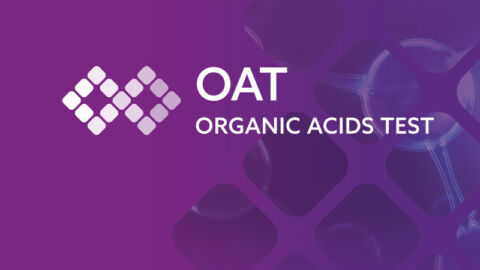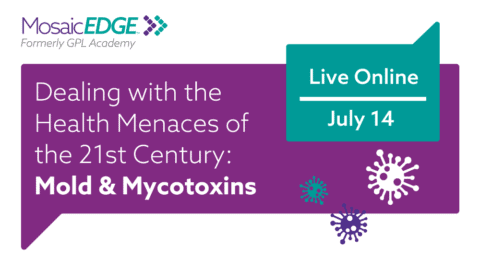Chronic candida has been a well-recognized problem in functional and integrative medicine for many years. It too is a problem acknowledged in conventional medicine, although at times for different reasons, i.e., oral thrush or skin infections.
Candidiasis is defined as a fungal infection linked to any form of candida species. These infections can occur in various places on or inside the body from the mouth, esophagus, intestines, as well as on the skin and scalp. Oral candida overgrowth (a.k.a. thrush), evidenced by white patches on the tongue or other areas in the mouth, is common in immune compromised individuals, the elderly, but also infants. Oral candida can cause mouth sores and make it difficult to chew food and swallow which can be extremely detrimental to the elderly through reduced nutrient intake. Esophageal candidiasis can occur with advancing infection making swallowing even more painful. Systemic candidiasis can occur too leading to candidemia which is defined as a candida infection within the bloodstream. Candida albicans is the species of candida most common in chronic candidiasis, but there are other types in existence known to cause problems as well.
Gastrointestinal candidiasis (GC) is a well-known problem recognized by functional and integrative medicine providers but is an underappreciated condition by many conventional medicine practitioners despite decades of clinical research. In autism, for example, GC commonly causes or contributes to digestive symptoms, e.g., bloating, constipation, flatulence. GC also can contribute to the accumulation of various toxic compounds such as chemical aldehydes known to affect cellular function through various biochemical alterations.
There are multiple mechanisms of pathogenicity associated with chronic candidiasis. Two common occurrences through the production of a toxic organic acid called arabinose and candida’s ability to cause leaky gut will be discussed.
Arabinose Toxicity
Arabinose, closely related to a sugar alcohol known as arabinitol, is a toxic aldehyde, which has been used for years as an indicator of invasive candidiasis. Aldehydes (-CHO) characterized by a carbon atom double bonded to an oxygen and single bonded to a hydrogen can be a reactive functional group involved in radical formation and oxidative stress. An article in 1995 by W. Shaw, Ph.D. detailing high levels of arabinose in twins with autism eventually led to further research into this compound and its prevalence to various other health disorders, e.g., Alzheimer’s disease. These conditions are often linked in part to chemical imbalances that are oxidative in nature.
Arabinose through its aldehyde group can bind with the amino acid lysine. This essential amino acid found in various proteins when complexed with arabinose can cross-link with the amino acid arginine. Arginine is involved in many physiological functions such as ammonia regulation, release of hormones, immune function, and wound healing. This interaction of arginine and the arabinose-lysine complex can alter normal biological function through the development of a toxic compound called pentosidine. Pentosidine, a glycation end-product, damages neuronal structures and has been linked to myelin damage, neurofibrillary tangle development, and Alzheimer’s disease.
Lysine is a functional component of many enzyme systems that depend on binding cofactors such as vitamin B6, lipoic acid and biotin. Therefore, high amounts of pentosidine formation being driven by excessive arabinose production from the invasive nature of candida may lead to functional vitamin deficiencies even when nutritional intake of these nutrients seems sufficient.
Leaky Gut
Invasive candida within the digestive system can lead to leaky gut (LG), a.k.a. increased intestinal permeability. This problem is brought about by invasive candida piercing through the apical membrane of an epithelial cell or damaging the tight junctions between these cells.
The lining of the digestive system is a complex network of epithelial structures that are involved in nutrient absorption, toxin neutralization, and mucosal immune function, a.k.a. mucosal barrier. When the mucosal lining is disturbed a leaky gut scenario can develop which allows gut toxins to breach the epithelial barrier and gain access to the lymphatic system and bloodstream. LG is known as a causative or contributing factor in various health conditions such as chronic fatigue, allergies, arthritis, autoimmune diseases/disorders, and other inflammatory diseases.
Laboratory Testing
The detection of candida can occur from various laboratory methods such as serum antibody testing and stool analysis identification. Often a stool analysis may not show the existence of candida, but when organic acid testing is done the presence of invasive candida is recognized through the measurement of arabinose. Unfortunately, some conventional medicine practitioners overlook the existence of candida that may show up in stool testing and even push aside the existence of elevated immunoglobulin G analysis based on the notion that “everyone has candida in their body” (author’s emphasis).
Organic Acids Testing vs Stool Analysis
Organic acids are metabolic compounds containing carbon, oxygen, and other atoms such as hydrogen, sulfur, and nitrogen. They are naturally occurring compounds linked to cellular metabolism and may be elevated because of problems in biochemical processing.
Many organic acids are produced by bacteria, candida, and other fungal organisms in the digestive system. These gut-produced organic acids get absorbed systemically then highly concentrate in the urine. They are measured through a laboratory profile called an Organic Acids Test (OAT). Certain organic acids from fungal metabolism represent overgrowth within the digestive tract, while the previously discussed arabinose is linked to the invasive nature of candida at the mucosal level. Arabinose is a prevalent marker seen on the OAT.
In the stool collection method, fecal samples are analyzed by microscopic visual appearance of yeast, as well as growth of the organisms in a culture medium. Being that candida and other forms of yeast are common to the digestive system, it is not unusual to see a positive finding on microscopy. This is commonly listed as “moderate” or “many” yeasts detected, but the actual type of species is determined by stool culture analysis.
The culture component is specific in isolating which type of organisms are present. For example, Candida albicans is the most common type of candida found in the digestive system, but the culture method may detect others such as Candida glabrata or Candida tropicalis.
One of the benefits of differentiating candida types through culture is the ability of the lab to provide sensitivity testing that can help determine which botanical or medication is most effective in eradicating the organism. As mentioned previously, stool analysis for candidiasis through culture is not 100% effective and miss detection even though an individual may be symptomatic of candida overgrowth. It is common to see elevated arabinose on the OAT, while the stool culture for candida is not detected.
Some labs provide polymerase chain reaction (PCR) analysis for candida detection. PCR technology helps make billions of copies of DNA accessible for study (13). Unfortunately, PCR testing does not differentiate between non-viable (non-living, not capable of reproducing) from viable (capable of reproduction) candida. Other considerations regarding PCR testing are that it can detect multiple pathogens but may not differentiate the causative organism and it may show false positives if the stool sample is collected too soon after previous antifungal treatment.
Conclusion
Chronic candidiasis can be a challenging condition for many individuals. Effective intervention requires reliable diagnostic testing, as well as understanding the various pathogenic mechanisms inherent to these sophisticated organisms.
There are many testing options available for the detection of intestinal candida that can determine overgrowth and the degree of invasiveness. Candidiasis, defined as a fungal infection linked to any form of candida species that is detected via serum, stool or organic acid analysis does not necessarily indicate that a patient is suffering from candidemia which is linked to actual intact fungal organisms cultured from the bloodstream. Unfortunately, blood cultures for candida are often unreliable (14) but understanding the clinical application of the methods discussed in this article can provide specific data to help identify individuals clinically affected by candida overgrowth.
In short, the organic acids test is a preferred option because it shows mucosal reactivity to invasive candida even when a stool analysis reports no evidence of candida overgrowth. Often, a serum IgG test will report high levels of candida which may correlate with an elevated arabinose on the OAT. However, this is not always the case. Therefore, my preference is to use the OAT as a primary test for candida assessment and incorporate stool analysis and/or serum testing as complementary methods.
References
1. Candidiasis. Fungal Diseases. United States: Centers for Disease Control and Prevention. 13 November 2019.
2. Candida infections of the mouth, throat, and esophagus. Fungal Diseases. United States: Centers for Disease Control and Prevention. 13 November 2019.
3. Symptoms of Oral Candidiasis. cdc.gov. February 13, 2014. Archived from the original on 29 December 2014.
4. Candidiasis. cdc.gov. February 13, 2014. Archived from the original on 29 December 2014.
5. Martins N, Ferreira IC, Barros L, Silva S, Henriques M. Candidiasis: predisposing factors, prevention, diagnosis and alternative treatment. Mycopathologia. 2014. 177 (5–6): 223–40.
6. Sell D, Monnier V. Structure elucidation of a senescence cross-link from human extracellular matrix. Implication of pentoses in the aging process. J Biol Chem. 1989;264(36): 21597-21602.
7. Kiehn T, Bernard E, Gold J, Armstrong D. Candidiasis: detection by gas-liquid chromatography of D-arabinitol, a fungal metabolite, in human serum. Science. 1979; 206(4418): 577-580.
8. Shaw W, Kassen E, Chaves E. Increased excretion of analogs of Krebs cycle metabolites and arabinose in two brothers with autistic features. Clin Chem. 1995;41(8):1094-1104.
9. Sell D, Monnier V. Structure elucidation of a senescence cross-link from human extracellular matrix. Implication of pentoses in the aging process. J Biol Chem. 1989;264(36): 21597-21602.
10. Smith MA, Taneda S, Richey PL, et al. Advanced Maillard reaction end products are associated with Alzheimer disease pathology. Proc Natl. Acad. Sci U S A. 1994; 91(12): 5710-5714.
11. Mahler H, Cordes E. Biological Chemistry. 1966; Harper and Row, NY. Pgs 322-375.
12. Ludovic Giloteaux, Julia K. Goodrich, William A. Walters, Susan M. Levine, Ruth E. Ley, Maureen R. Hanson. Reduced diversity and altered composition of the gut microbiome in individuals with myalgic encephalomyelitis/chronic fatigue syndrome. Microbiome, 2016.
13. Saiki, R.; Gelfand, D.; Stoffel, S.; Scharf, S.; Higuchi, R.; Horn, G.; Mullis, K.; Erlich, H. Primer-directed enzymatic amplification of DNA with a thermostable DNA polymerase. 1988; Science. 239 (4839): 487–491.
14. Cornelius J. Clancy and M. Hong Nguyen. Finding the Missing 50%” of Invasive Candidiasis: How Nonculture Diagnostics Will Improve Understanding of Disease Spectrum and Transform Patient Care, 2013-04-04 Oxford Journals, Medicine & Health, Clinical Infectious Diseases, Volume 56, Issue 9 Pp. 1284-1292.
87–92




